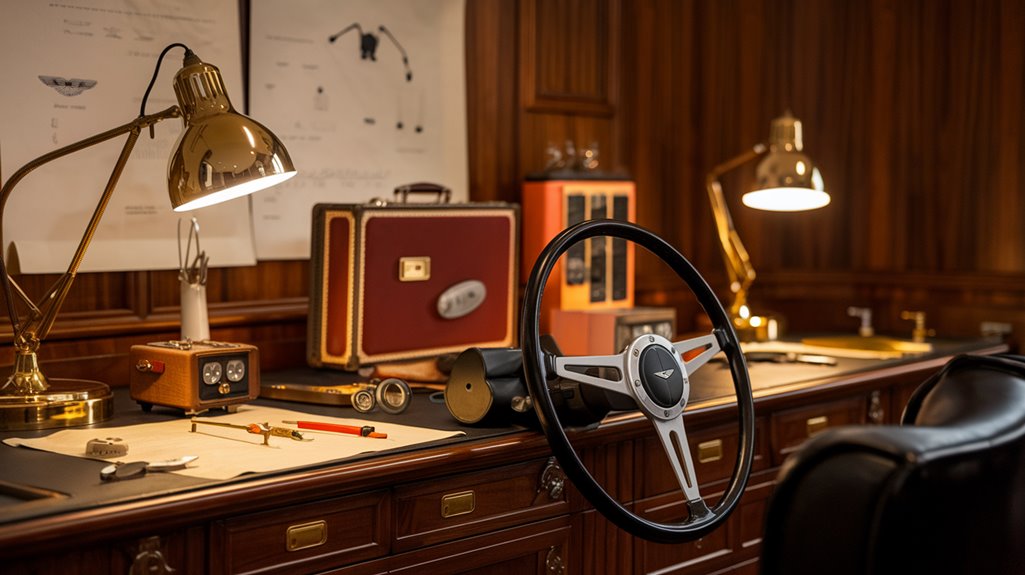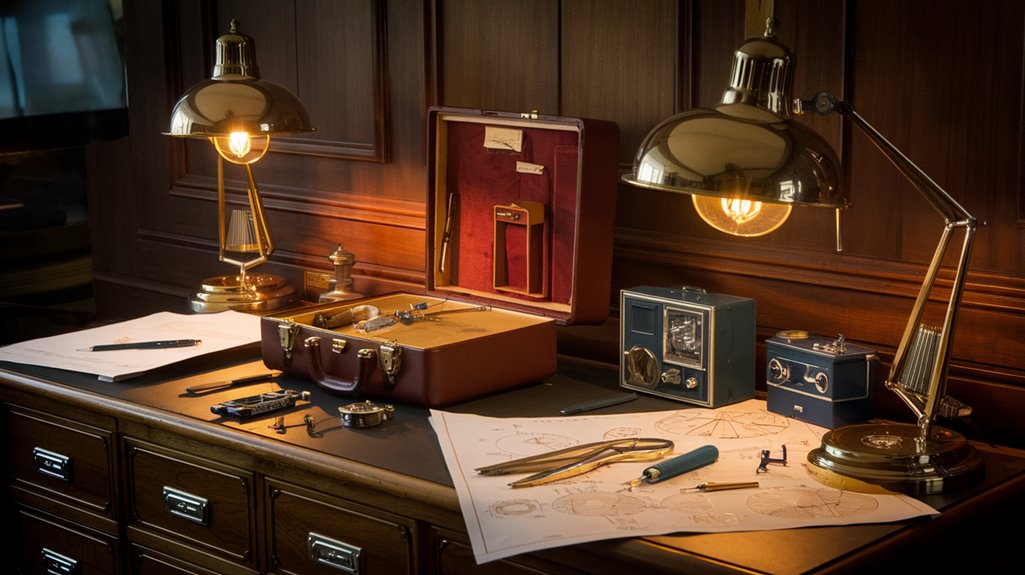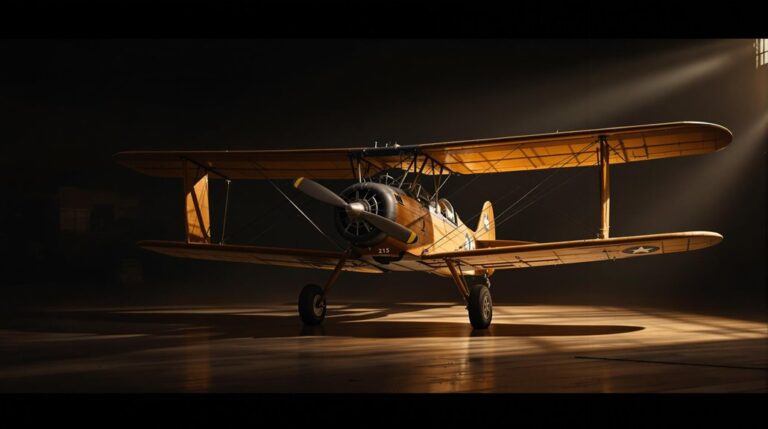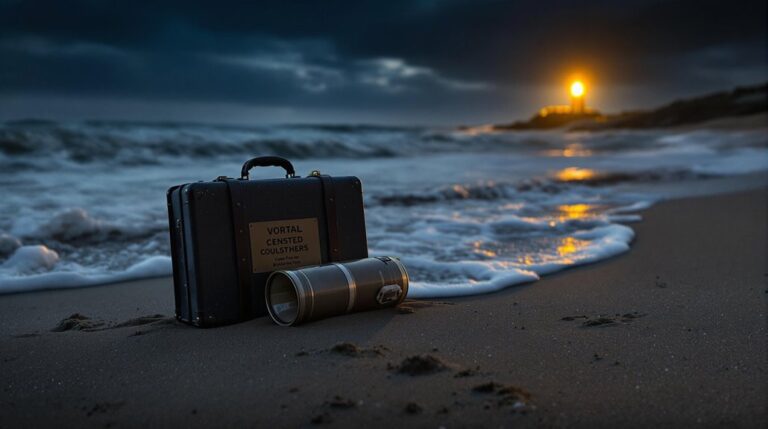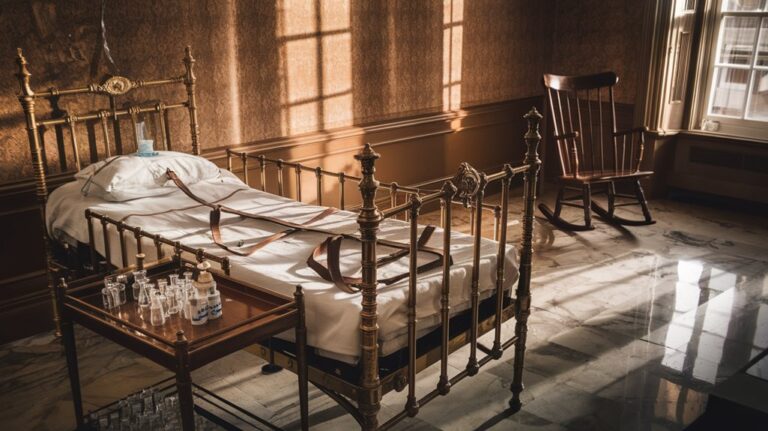Q From James Bond: the Real Inventor of Spy Gadgets
You might think Q's fantastic gadgets in James Bond films are pure Hollywood fiction, but they're rooted in the remarkable work of Charles Fraser Smith. This real-life genius crafted espionage tools during World War II that would make even 007 envious. From miniature cameras hidden in buttons to weapons disguised as everyday items, Smith's innovations didn't just help win a war – they revolutionized modern espionage and inspired one of fiction's most beloved characters.
The Birth of Q: Charles Fraser Smith's Legacy
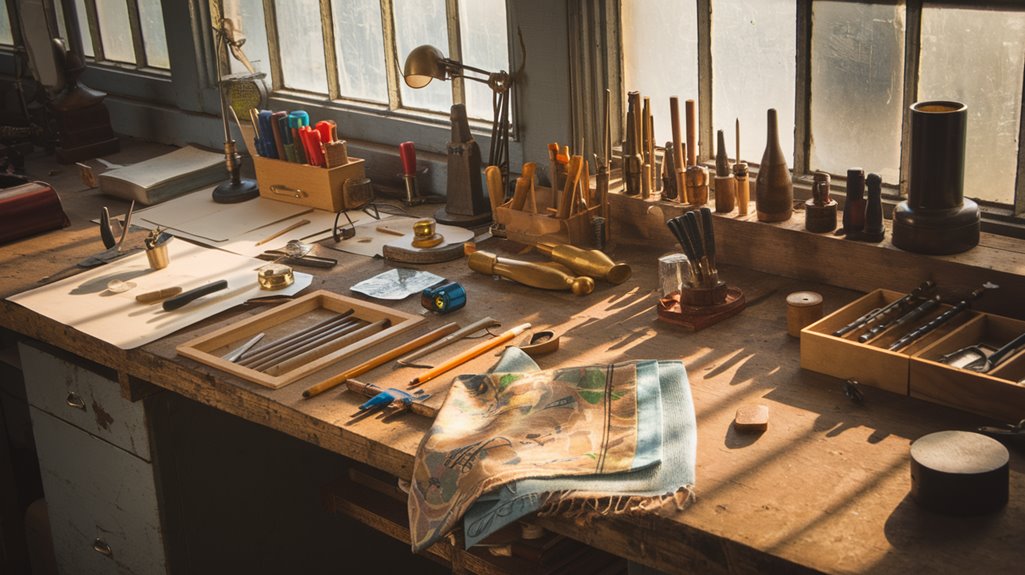
While many know Q as James Bond's gadget master, the real-life inspiration behind this iconic character was Charles Fraser Smith, a missionary-turned-spy-innovator who revolutionized wartime espionage.
Smith's inspiration emerged from an unlikely background. Orphaned at seven and raised by Christian missionaries, he developed a talent for woodwork and science at Brighton College.
After serving as a missionary in Morocco, his life took an unexpected turn when his sermon on bricolage caught the attention of Ministry of Supply officials. This pivotal moment launched his secret career in gadget innovation. His lasting influence can be seen in how CIA agents today rely more on information and communication technology than explosive devices.
Working under the cover of the Clothing and Textile Department, Smith created ingenious devices like shaving brushes containing hidden film and cigarette lighters with concealed cameras. He managed a network of over 300 suppliers who helped produce Spanish Army uniforms to prevent Axis recruitment.
His inventions, which he called "Q Devices," would later inspire Ian Fleming's creation of Q Branch.
From World War II to James Bond: The Evolution of Spy Gadgets
As World War II accelerated the development of espionage technology, spy gadgets evolved from simple concealment devices into sophisticated tools of deception and surveillance.
You'll find this spy technology transformation exemplified in innovations like the Enigma code-breaking machine, which processed thousands of intercepted messages daily by 1942. Alan Turing and his brilliant team at Bletchley Park were instrumental in breaking these complex codes.
The gadget evolution continued through the Cold War, introducing ingenious devices like the Steineck ABC wristwatch camera and "The Thing" – a passive listening device that needed no power source. Advanced high-altitude reconnaissance aircraft provided crucial aerial intelligence during this period.
These innovations revolutionized covert operations, making surveillance more discreet and effective.
Even seemingly simple tools, like the Jack in the Box briefcase with its inflatable dummy, demonstrated the creative lengths spies would go to evade detection.
Each new gadget marked another step in espionage's technological advancement, setting standards that would later inspire James Bond's fictional arsenal.
Notable Inventions That Changed Espionage
Throughout the golden age of espionage, ingenious spy gadgets revolutionized the art of covert operations. You'd find shoe heel transmitters planted in Western diplomats' footwear, allowing Romanian agents to eavesdrop on sensitive meetings.
The spy technology didn't stop there – pigeon cameras achieved remarkable success rates during WWI, while the CIA's Insectothoper drone pioneered remote surveillance despite its limitations. Female KGB agents carried the Kiss of Death lipstick pistol for covert assassinations. Soviet operatives wielded poison umbrellas with devastating effectiveness against political dissidents.
Cold War innovations brought coat button cameras and miniature transceivers disguised as luggage, transforming how intelligence was gathered.
For emergency situations, agents relied on concealed tools like the CIA's rectal tool kit and untraceable letter-opening devices.
Even more daring were the glove guns developed by both US Navy and KGB operatives, enabling close-quarter missions while maintaining the element of surprise.
The Impact on Modern Intelligence Agencies
Modern intelligence agencies have transformed dramatically due to AI-driven surveillance and automation technologies. You'll find that intelligence modernization has shifted operations from traditional human-centric approaches to algorithm-driven systems that process vast amounts of data in real-time. The development of digital recorders has enabled agencies to capture and analyze conversations with unprecedented clarity and discretion.
The strategic deployment of unmanned aerial vehicles has revolutionized how agencies conduct surveillance operations without risking personnel.
While these advancements enhance operational efficiency and reduce risks to field agents, they've sparked intense debates about surveillance ethics.
You're witnessing a revolution where facial recognition, quantum computing, and advanced biometric tools are becoming standard features in intelligence gathering.
However, you should understand that this technological leap creates new challenges for agencies worldwide. They must balance the power of AI-enhanced surveillance with privacy concerns, regulatory compliance, and the growing sophistication of counter-surveillance measures.
This evolution has fundamentally changed how intelligence agencies operate in the digital age.
Behind the Fiction: Real-Life Applications of Q's Technology
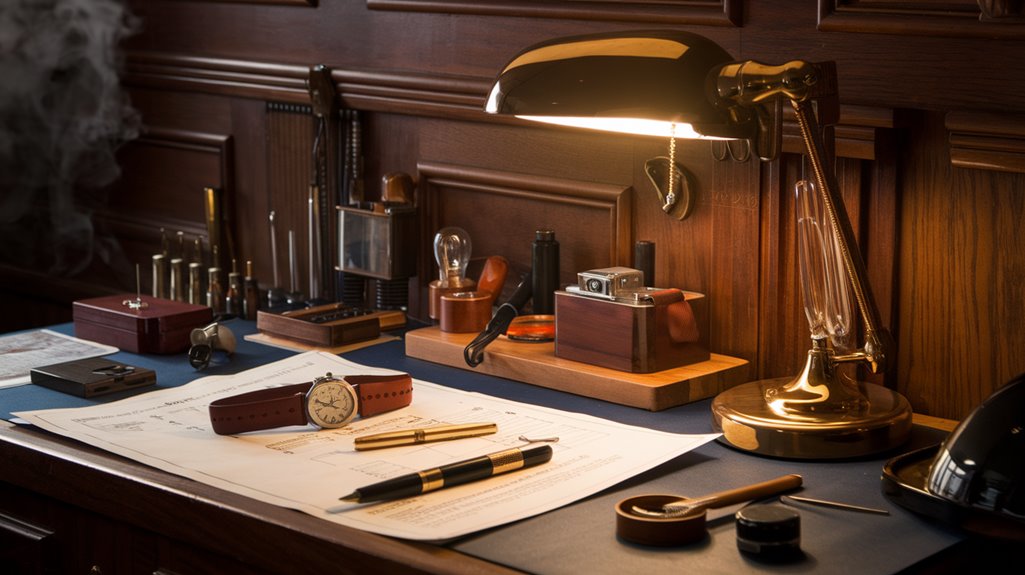
While James Bond's gadgets may seem purely fictional, many of Q's inventions have real-world counterparts that shape today's intelligence operations. Charles Fraser-Smith created hidden compartment devices for espionage.
You'll find biometric security systems protecting sensitive areas, though they're not quite as foolproof as Q's versions. Surveillance technology has evolved from fantasy to reality, with agencies developing tools similar to those in Bond films. Early spy tools like the miniature homing beacon paved the way for modern GPS tracking devices.
- Real-world agencies like UK NACE develop pioneering technologies for counter-espionage, much like Q Branch
- Charles Fraser Smith, the inspiration for Q, created actual spy tools during World War II
- Today's smartphones and drones reflect innovations first imagined in Bond films
- Biometric fingerprint scanners have become commonplace in security applications
The influence of Q's gadgets extends beyond entertainment, inspiring technological advancement in both government agencies and commercial applications.
The CIA's Office of Technical Services even considers itself "America's Q."
The Cultural Influence of Q Branch
The cultural footprint of Q Branch extends far beyond the silver screen, shaping how intelligence agencies present themselves to the public.
You'll find that major organizations, including the CIA's Office of Technical Services and the Department of Homeland Security, have embraced the "Q" designation, moving past typical spy stereotypes to highlight their technological capabilities.
 historical accuracy, spy agencies must balance authenticity with public engagement. Modern intelligence work requires strategic planning to effectively navigate cultural differences and sensitivities.
historical accuracy, spy agencies must balance authenticity with public engagement. Modern intelligence work requires strategic planning to effectively navigate cultural differences and sensitivities.
While real-life engineers like Charles Fraser Smith proved that innovative spy gadgets weren't just fiction, the KGB's serious analysis of James Bond films shows how Q Branch affected Cold War perceptions.
Today, intelligence agencies understand that effective espionage requires more than just gadgets – it demands cultural intelligence and the ability to navigate diverse situations seamlessly.

